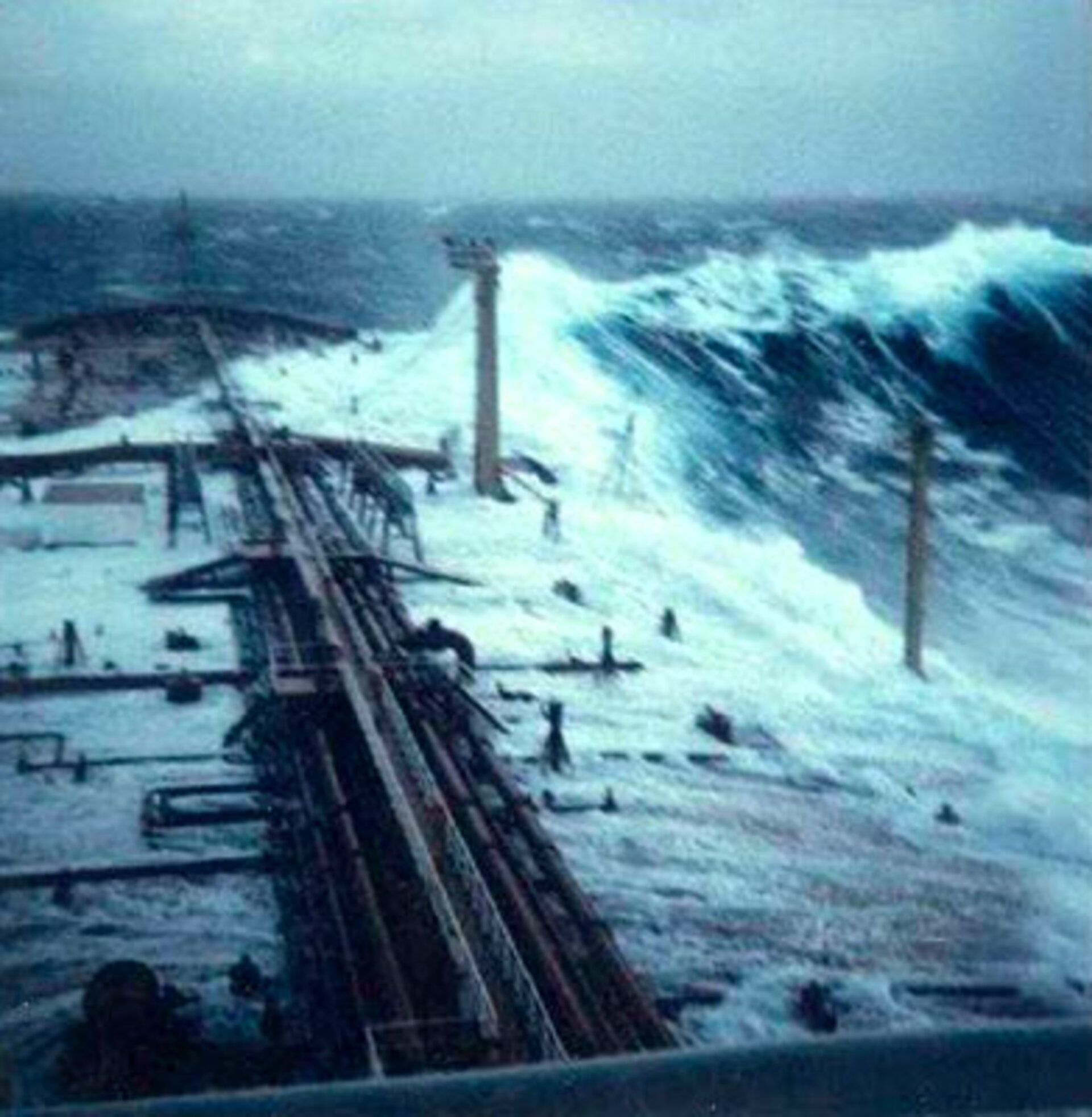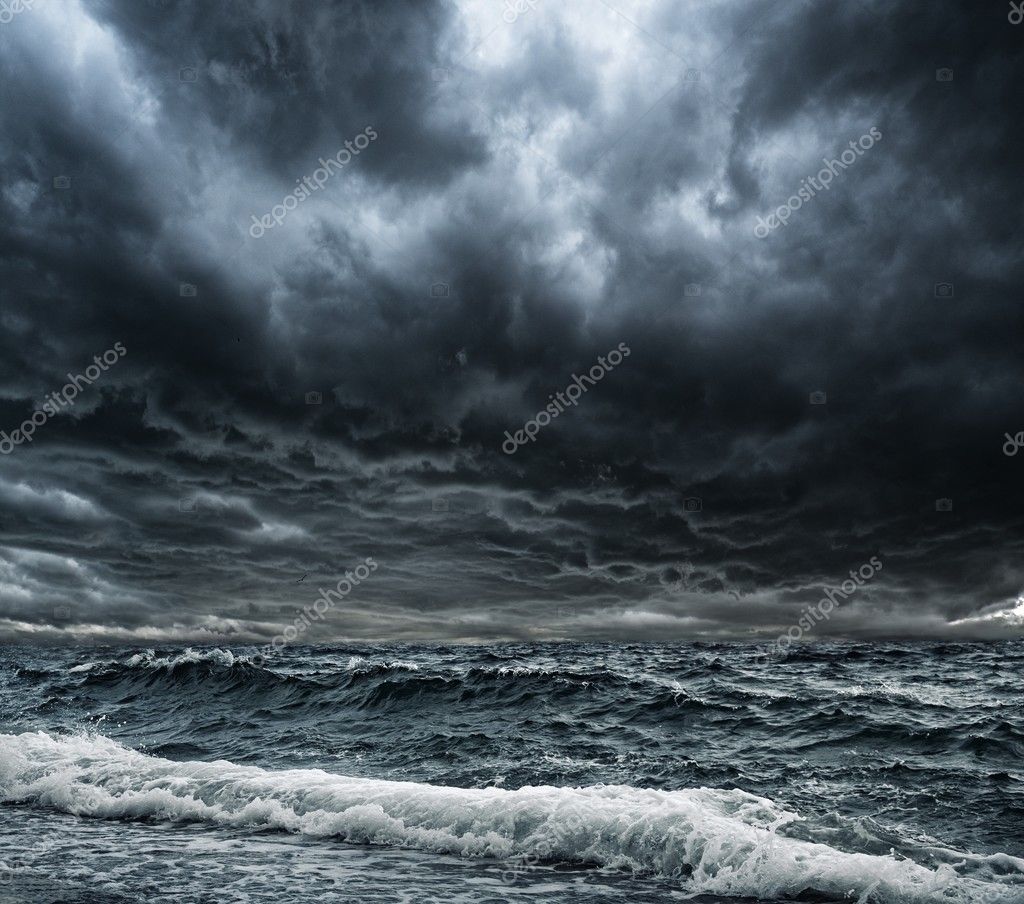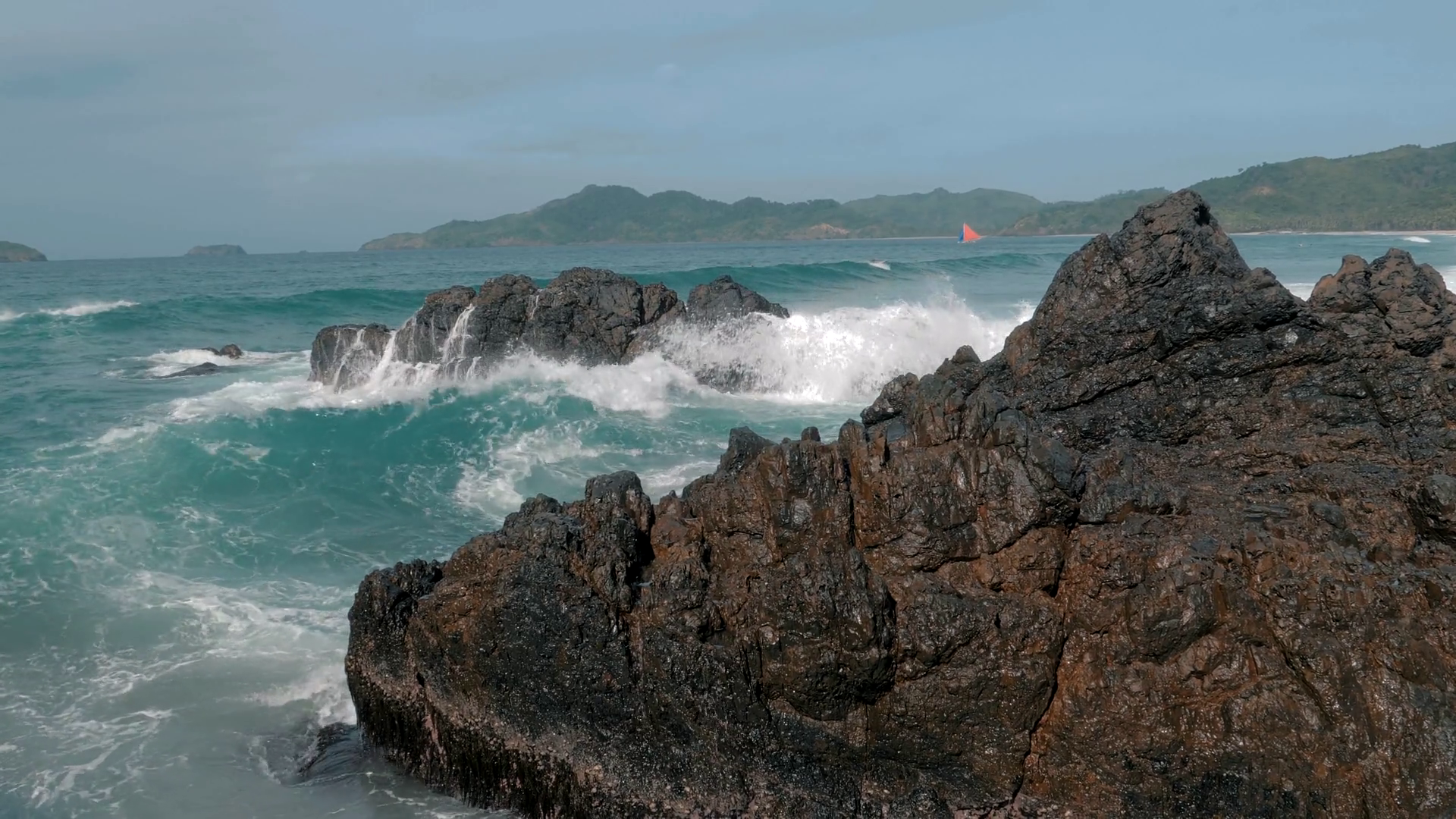
It just all depends on your outlook going into it. Yup, getting smashed can be fun I promise. I bet the first feeling that comes to mind when a wave is about to break on you is fear, but it doesn’t have to be this way.įlipping the script means seeing the exact opposite, changing your default response and seeing the funny side. The quickest, easiest way to stay calm when a wave’s about to break on you is to flip the script. Takes a little forethought, time, and practice, but it’s all in the preparation. With experience you’ll be able to tell ahead of time if a wave is going to break on you, and adjust your breathing to clear your lungs first before taking that big deep breath in that you need.

This is where breath management comes in, expecting the worst and being prepared.
#Big ocean waves hit shit full#
You see, if your lungs are already ¾ full of old oxygen and you gasp in that last ¼ before a wave breaks on you it’s not going to be anywhere near as effective as lungs full of fresh oxygen. Naturally you’ll want to take a deep breath before dealing with a wave that’s about to break on you, and that’s great and all, but there’s a little trick that’ll help you get that extra oxygen in your system to keep you from stressing out. Manage your energy, be smart, be vigilant and take your time.Īnd when that ugly wave rears up in front of you about to break on your head, you’ll have a full set of lungs ready to take a deep breath and weather the storm. Its network of detectors can track quakes that may cause a tsunami.So when the waves are more serious and you’re out of your comfort zone don’t let yourself get to this position. To save lives, scientists established the Pacific Tsunami Warning System, based in Hawaii, in the USA. There may also be up to one hour between each wave.Ĭan you predict when a tsunami is coming? Then a wave blasts onto the shore minutes later, then another and another for two hours or more. People can see the ocean floor littered with flopping fish and other sea animals. Whereas a large wave caused by a storm might have a wavelength of up to 150m, a tsunami could reach up to a fearsome 1,000km! How fast is a tsunami?Ī normal wind wave travels at about 90kmh, but a tsunami can race across the ocean at an incredible 970kmh! Sometimes, before a tsunami hits, there is a huge vacuum effect, sucking water from harbours and beaches. They can rise 35m or higher – that’s the same as a 10-floor block of flats! However, the scariest thing about a tsunami is its wavelength, as this determines how far inland it can travel. However, as the water becomes shallow, the waves slow down and begin to grow.

Out in the open ocean, tsunami waves are only about one-metre high because the water is deep. Underwater landslides or volcanic eruptions can also displace water (cause water to spread across the ocean) and may lead to a tsunami.


If an earthquake lifts or drops part of the ocean floor, the water above rises and starts spreading across the ocean, causing a tsunami. Sometimes, though, the plates get stuck, the pressure builds up and they suddenly slam into a new position. Giant slabs of the Earth’s crust, called tectonic plates, grind together. Meaning “ great harbour wave” in Japanese, tsunamis are sometimes called “tidal waves” but their strength has nothing to do with the tides. About four out of five tsunamis happen within the Ring Of Fire, a zone in the Pacific Ocean where earthquakes and volcanic eruptions frequently take place. They can speed across the ocean as fast as a jet plane, swallow up islands and wipe out villages.īut what causes tsuamis…? Join National Geographic Kids and dive into our tsunami facts to find out! Tsunami facts What causes a tsunami? A tsunami (soo-NAH-mee) is one of the world’s most powerful and destructive natural forces.


 0 kommentar(er)
0 kommentar(er)
